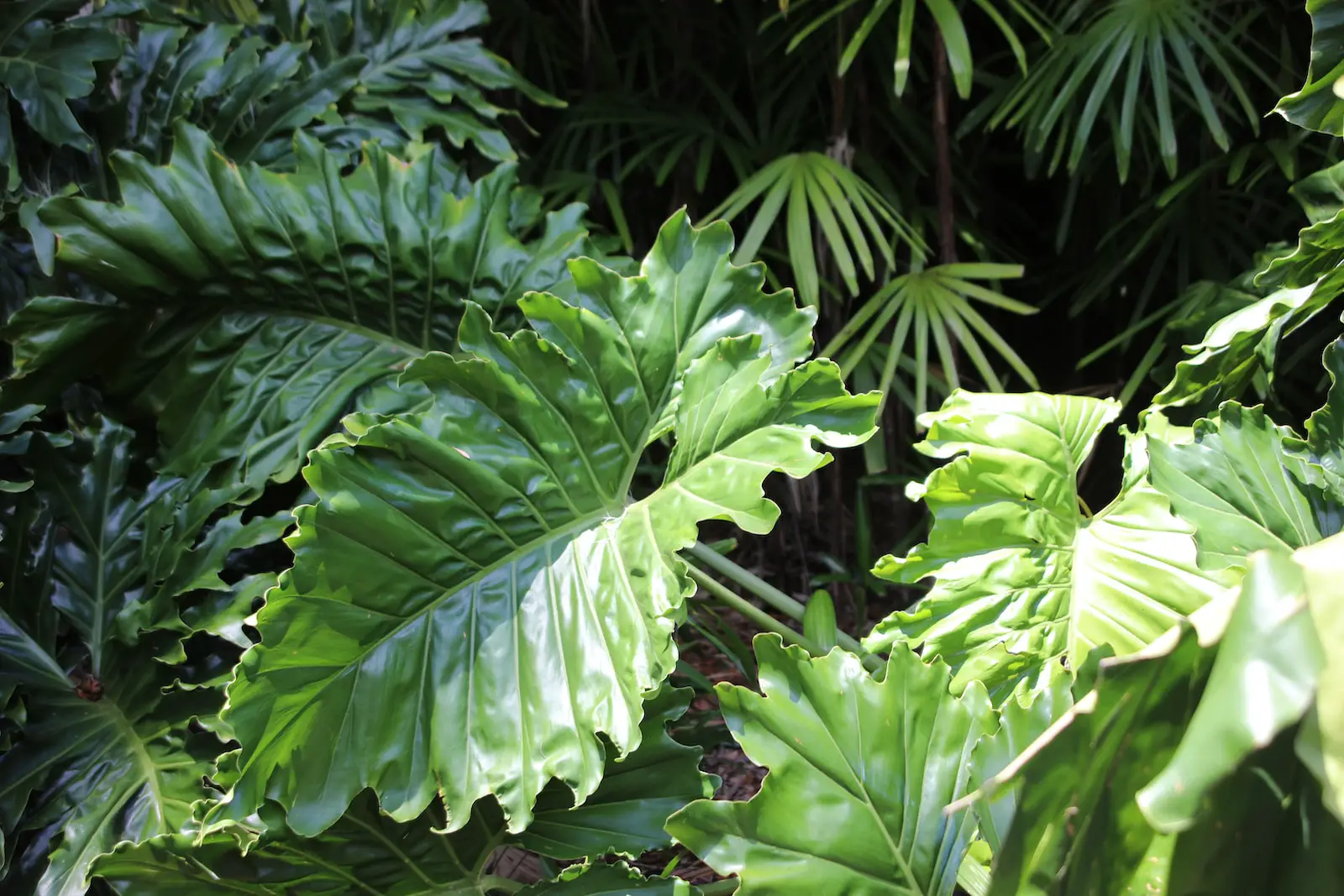Alocasia Polly is a stunning tropical plant that captivates the eye with its deep green leaves adorned with prominent white veins. Its compact size and striking appearance make it a favorite among indoor gardeners, and it’s often used to bring a touch of the tropics to interiors.
Commonly referred to as African Mask Plant or Elephant Ear, Alocasia Polly is a hybrid variety of Alocasia, known for its sharp, arrowhead-shaped leaves. It’s a complex and sometimes temperamental plant, requiring specific care to flourish. Despite its demanding nature, many find the challenge of cultivating Alocasia Polly worth the effort for the aesthetic rewards.
In its native tropical habitats, Alocasia Polly grows under the canopy of larger plants, protected from direct sunlight and bathed in humidity. Understanding its natural environment is key to recreating the right conditions indoors and nurturing a healthy, thriving plant.
| Attribute | Details |
|---|---|
| Common Names | African Mask Plant, Elephant Ear |
| Botanical Name | Alocasia ‘Polly |
| Family | Araceae |
| Plant Type | Perennial |
| Mature Size | 1-2 feet tall |
| Sun Exposure | Part shade, filtered sunlight |
| Soil Type | Rich, well-draining, slightly acidic soil |
| Hardiness Zones | 10-11 |
| Native Area | Tropical Asia |
Alocasia Polly Care
Caring for Alocasia Polly involves balancing several key factors: light, soil, water, and humidity. It’s not a plant for the casual or forgetful gardener, as it demands regular attention and specific conditions. As a tropical plant, Alocasia Polly loves warmth and humidity but dislikes direct sunlight, soggy soil, or drafts.
The reward for meeting these needs is a stunning plant with deep green leaves and striking white veining. Even though Alocasia Polly might be challenging, with the right care, it can become a show-stopping centerpiece in any interior space.
Light Requirement for Alocasia Polly
Alocasia Polly requires bright, indirect sunlight. A north or east-facing window covered with a sheer curtain can provide the ideal light conditions. Too much direct sun can burn the leaves, while too little light can cause the plant to become leggy and lose its vibrant coloring.
Soil Requirements for Alocasia Polly
A well-draining, slightly acidic soil rich in organic matter suits Alocasia Polly best. A mixture of potting soil with added perlite and peat moss can create the perfect environment for the roots. The soil should retain some moisture without becoming soggy, as poor drainage can lead to root rot.
Water Requirements for Alocasia Polly
Consistent watering is vital for Alocasia Polly. Water the plant when the top inch of soil feels dry, ensuring that excess water can drain away. In the growing season, this may require watering as often as once a week. Reduce watering during the winter months, but never let the soil dry out entirely.
Temperature and Humidity
Alocasia Polly thrives in temperatures between 60-75°F. Sudden temperature changes or drafts should be avoided. High humidity is also essential, and levels can be maintained through misting, using a humidifier, or placing the plant on a pebble tray with water.
Fertilizer
Feeding Alocasia Polly with a balanced liquid fertilizer diluted to half strength every 4-6 weeks during the growing season will support healthy growth. Avoid fertilizing in the dormant winter months, as this can lead to salt buildup in the soil.
Pruning Alocasia Polly
Pruning is necessary to remove dead or yellowing leaves and maintain the plant’s appearance. Regular trimming allows the plant to focus energy on new growth. Clean, sharp scissors or pruning shears should be used for this task.
Propagating Alocasia Polly
Propagating Alocasia Polly can be done through division. Carefully separating the rhizomes with roots attached and replanting them in a similar soil mix will encourage new growth. Propagation is best done in the spring or early summer.
How To Grow Alocasia Polly From Seed
Growing Alocasia Polly from seed is a complex process that’s usually left to professionals. Fresh seeds must be sown in a well-draining medium and kept consistently moist and warm. It may take several months for seedlings to appear.
Common Pests & Plant Diseases
Spider Mites
Regular inspections and cleaning with insecticidal soap can prevent infestations of spider mites.
Root Rot
Caused by overwatering and poor drainage, root rot can be fatal if not addressed promptly.
Common Problems With Alocasia Polly
Drooping Leaves
Drooping leaves can be a sign of overwatering or underwatering. Check soil moisture and adjust as needed.
Yellowing Leaves
Yellowing leaves often indicate overwatering or insufficient light. Assess the plant’s environment to determine the underlying issue.
Brown Leaf Edges
Brown leaf edges typically suggest a lack of humidity. Increasing humidity can alleviate this problem.
Pro Tips
- Avoid direct sunlight to prevent leaf burn.
- Ensure good drainage to prevent root rot.
- Maintain consistent humidity, especially in dry environments.
- Be patient and attentive, as Alocasia Polly responds well to consistent care.
- Choose the right location, away from drafts and heating or cooling vents.

